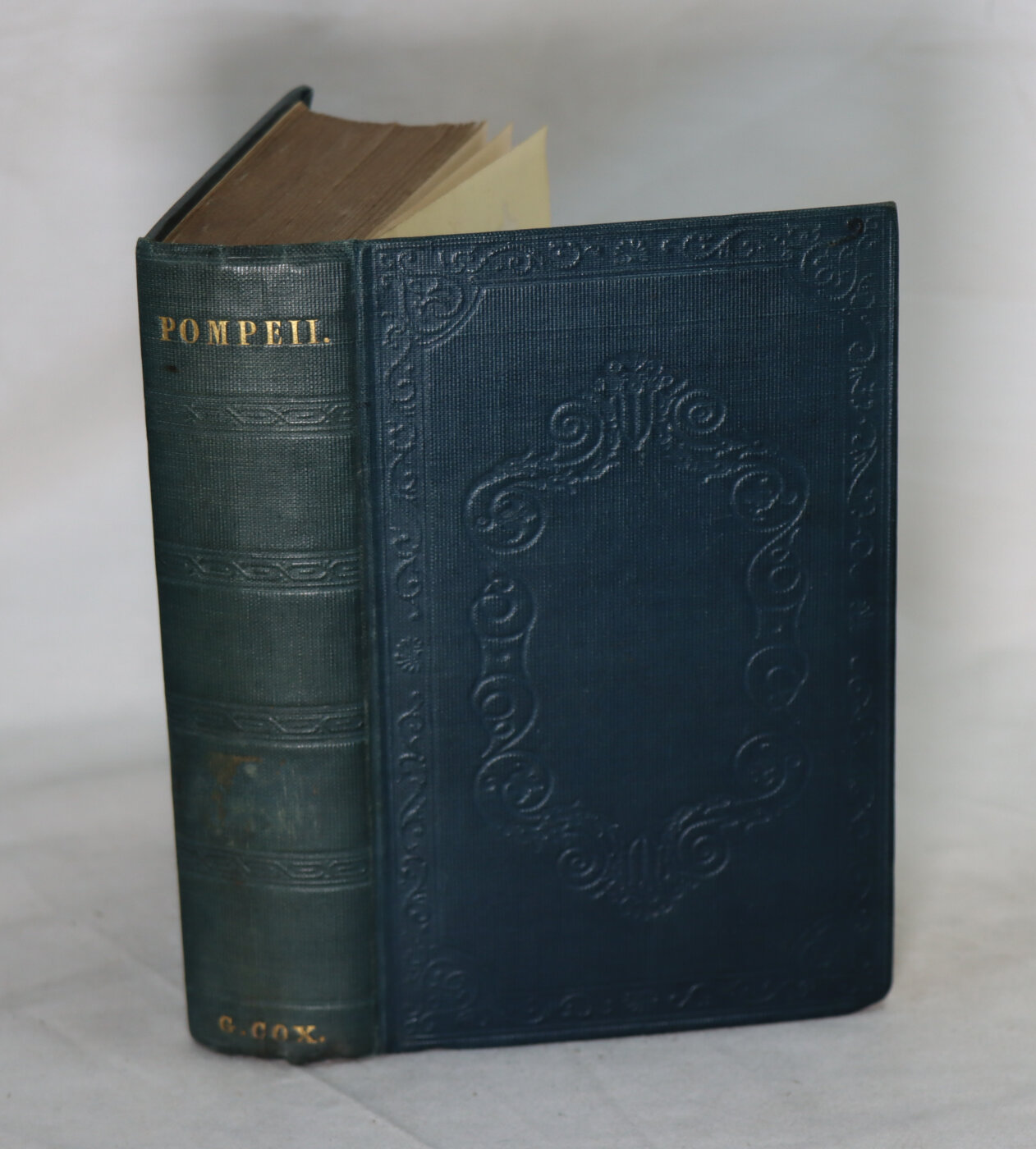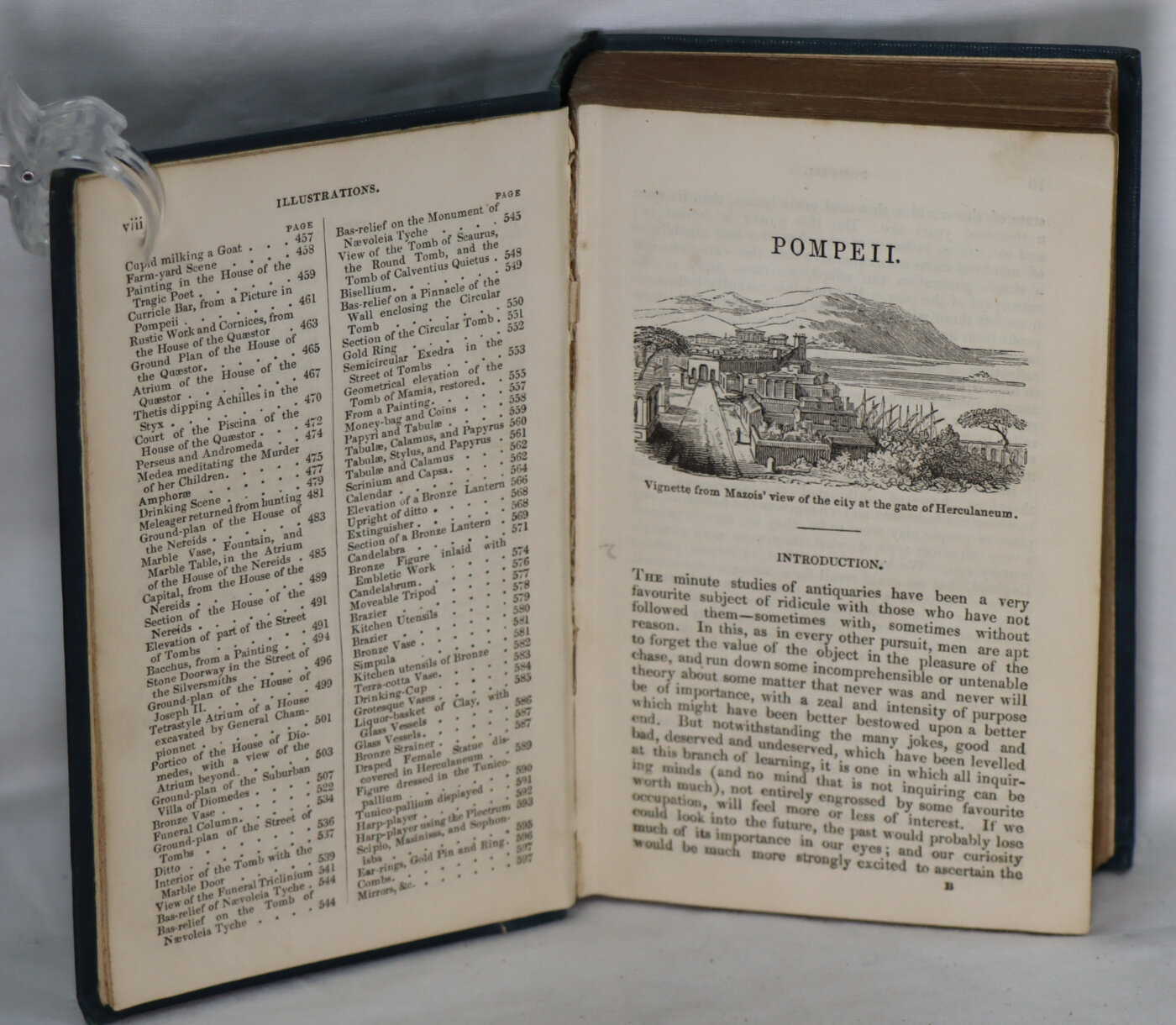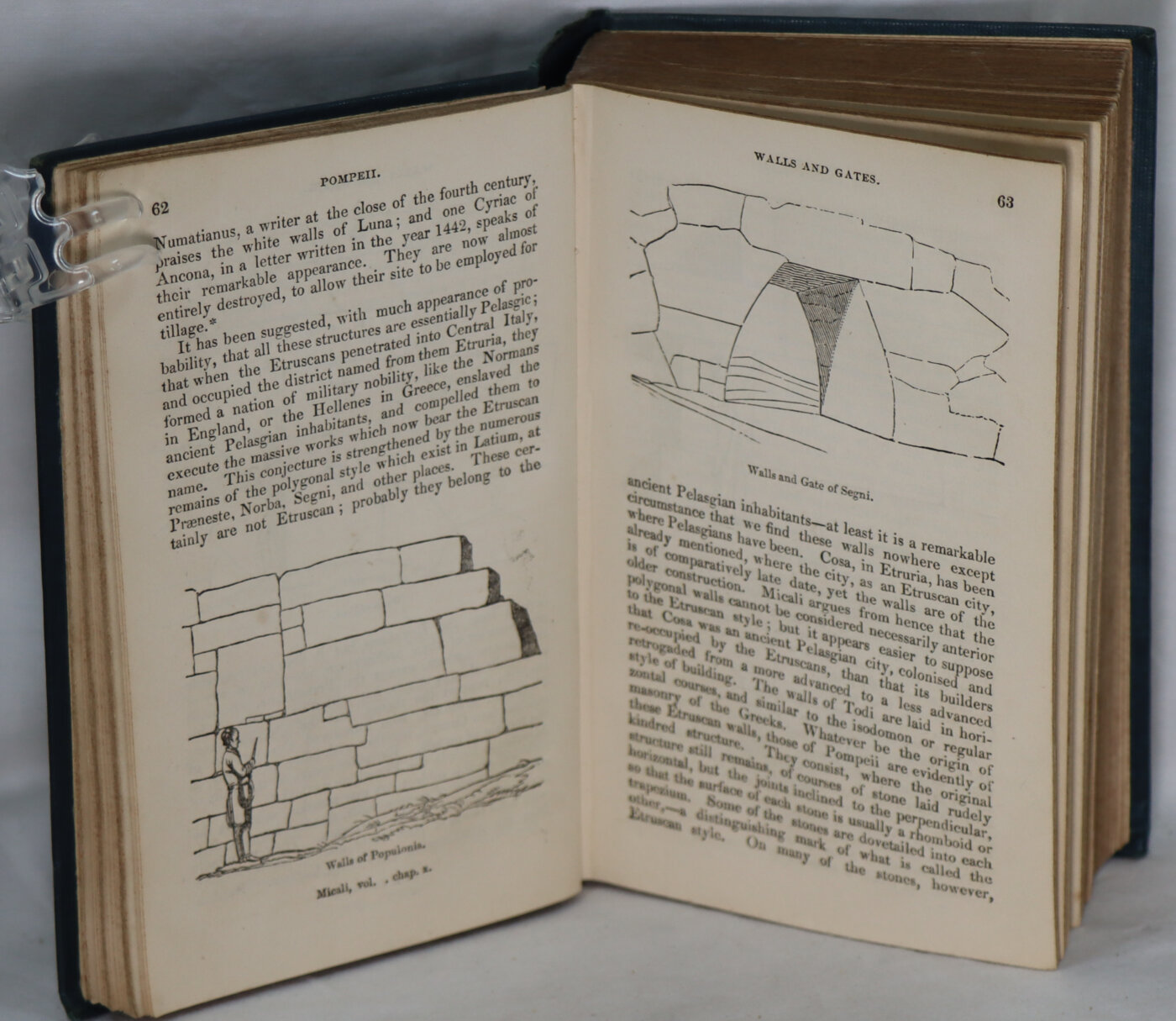Pompeii. It's Destruction and Re-Discovery.
Printed: 1853
Publisher: G Cox. King St, London
Edition: New edition
| Dimensions | 10 × 15 × 3 cm |
|---|---|
| Language |
Language: English
Size (cminches): 10 x 15 x 3
Condition: Very good (See explanation of ratings)
Your items
Item information
Description
Dark green cloth binding with gilt title on the spine.
F.B.A. provides an in-depth photographic presentation of this item to stimulate your feeling and touch. More traditional book descriptions are immediately available.
Note: This book carries the £5.00 discount to those that subscribe to the F.B.A. mailing list.
Green Boards. Condition: Very Good Minus. 598pp. Gilt embossed lettering and design to the spine. Numerous drawings throughout illustrate the text. Clean and tight. A very good, lovely copy.
Without Doubt this is the best 19th century guide to Pompeii.
Pompeii was an ancient Roman city in what is now the commune of Pompei near Naples in the Campania region of Italy. Along with Herculaneum, Stabiae, and many surrounding villas, the city was buried under 4 to 6 m (13 to 20 ft) of volcanic ash and pumice in the eruption of Mount Vesuvius in 79 AD.
Largely preserved under the ash, Pompeii offers a unique snapshot of Roman life, frozen at the moment it was buried, as well as insight into ancient urban planning. It was a wealthy town of 10,000 to 20,000 residents at the time it was destroyed. It hosted many fine public buildings and luxurious private houses with lavish decorations, furnishings and artworks, which were the main attractions for early excavators; subsequent excavations have found hundreds of private homes and businesses reflecting various architectural styles and social classes, as well as numerous public buildings. Organic remains, including wooden objects and human bodies, were interred in the ash; their eventual decay allowed archaeologists to create moulds of figures in their final moments of life. The numerous graffiti carved on outside walls and inside rooms provide a wealth of examples of the largely lost Vulgar Latin spoken colloquially at the time, contrasting with the formal language of classical writers.
Following its destruction, Pompeii remained largely undisturbed until its rediscovery in the late 16th century. Major excavations did not begin until the mid-18th century, which marked the emergence of modern archeology; initial efforts to unearth the city were haphazard or marred by looting, resulting in many items or sites being damaged or destroyed. By 1960, most of Pompeii had been uncovered but left in decay; further major excavations were banned or limited to targeted, prioritized areas. Since 2018, these efforts have led to new discoveries in some previously unexplored areas of the city, including a banquet hall adorned with rare, well preserved frescoes depicting various mythological scenes and figures.
Pompeii is a UNESCO World Heritage Site, owing to its status as “the only archaeological site in the world that provides a complete picture of an ancient Roman city.”It is among the most popular tourist attractions in Italy, with approximately 2.5 million visitors annually.
An image released by the Italian Culture Ministry on Wednesday, April 10, 2024, shows a fresco depicting Helen, left, and Paris of Troy, figures from Greek mythology. (Italian Culture Ministry via AP, HO)
Want to know more about this item?

Share this Page with a friend


















